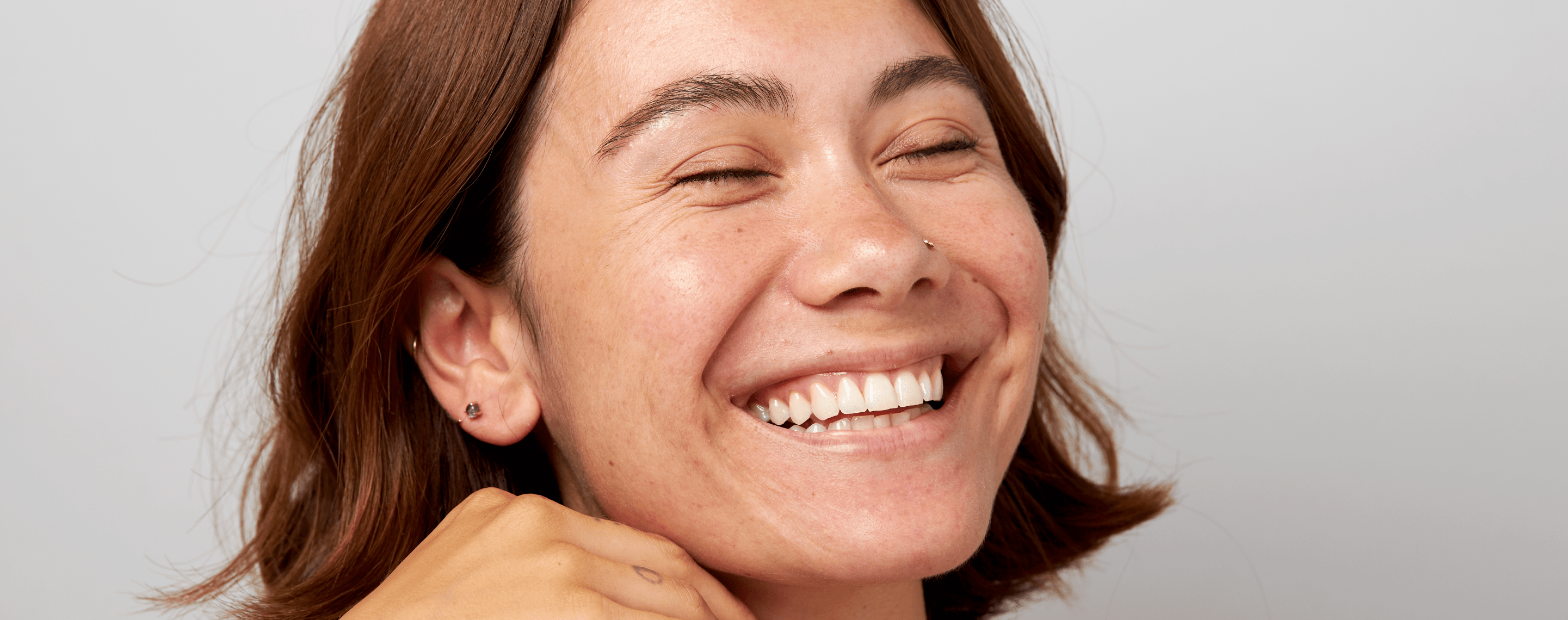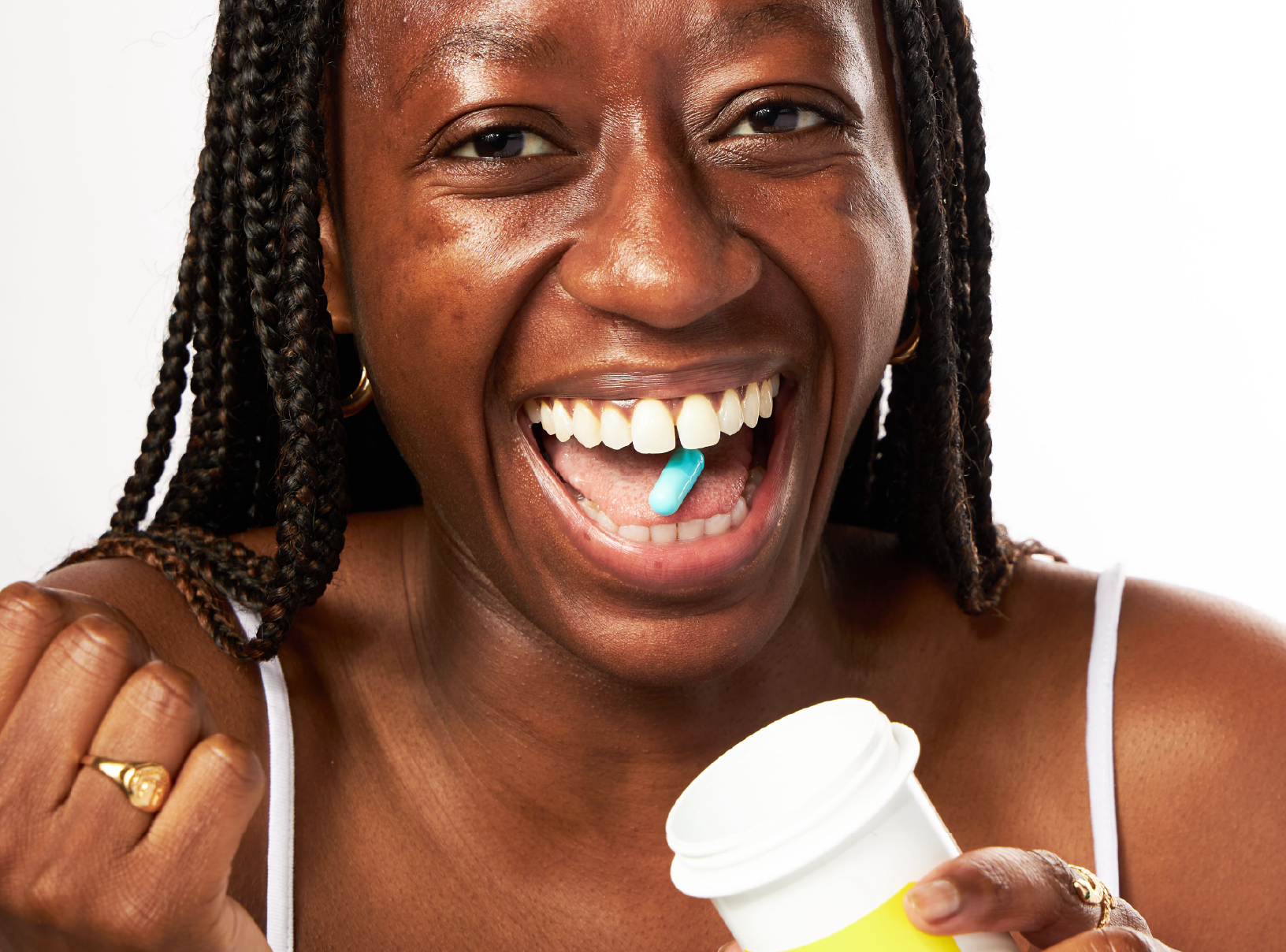Education
Why is my forehead breaking out?


SHARE
Education
Why is my forehead breaking out?
Medically reviewed by Vicky Davis, FNP
Written by Apostrophe Team
Last updated 11/1/2024
Acne is an almost universal skin problem. According to the American Academy of Dermatology, it affects up to 50 million Americans every year, including as many as 85 percent of people from age 12 to 24.
While dealing with acne anywhere on your body can be frustrating, forehead acne is particularly annoying due to its highly visible location on your face.
Forehead breakouts can range in severity from mild, like whiteheads and blackheads, to severe, such as breakouts that involve cystic acne.
Like other acne, breakouts that affect your forehead are both treatable and preventable with the right combination of medication, skincare products, and good habits.
Below, we’ve explained why your forehead might be breaking out, as well as the steps that you can take to get rid of forehead acne and prevent it from coming back.
Forehead Acne Breakouts: The Basics
Acne breakouts develop when your hair follicles, or pores, become clogged with sebum and dead skin cells.
Just like other parts of your face, your forehead is one of the most common locations for mild and severe forms of acne.
A variety of factors play a role in acne breakouts, from hormonal changes to medication use, stress, and personal hygiene.
Sometimes, your forehead may break out when your hair or styling products transfer oil onto your face.
Most of the time, topical acne medications are enough to get forehead acne breakouts under control and prevent them from developing again in the future.
What Causes Forehead Acne?
Whether it affects your forehead, nose, cheeks, or jawline, all acne develops through the same basic process.
Like the rest of your face, your forehead is full of tiny hair follicles, or pores, that can turn into acne when they become clogged with sebum and dead skin cells.
Sebum is a type of oil secreted by your sebaceous glands (or oil glands). It’s essential for keeping your skin hydrated and maintaining its protective barrier function.
While some sebum is essential for your skin’s health and function, when your sebaceous glands secrete too much sebum, the excess oil can build up on the surface of your skin, giving it an oily feel and shiny appearance.
This extra sebum can mix with dead, leftover skin cells to form a thick substance that clogs your pores and causes acne to develop.
Acne becomes severe when bacteria multiply in a clogged pore, causing inflammation, pain, and discomfort.
Severe acne is often difficult to treat and may affect your entire forehead, as well as other parts of your face.
Behind the scenes, a variety of different factors can aggravate forehead acne. For example, it’s common for acne to flare up shortly before and during your period in response to fluctuations in your production of certain hormones.
Issues such as anxiety, stress, your diet, and even your use of certain medications can also play their own parts in acne breakouts that affect your forehead and other parts of your face.
Our guide to the causes of acne discusses these factors in more detail, as well as the roles they can play in acne and other common skin conditions.
Types of Forehead Acne
Several different types of acne can develop on your forehead, as well as other parts of your face and body.
You may notice one or several different types of acne during a breakout:
Comedonal acne. This type of acne forms when a pore becomes clogged with sebum and dead skin cells. It can be open (a blackhead) or closed (a whitehead). Comedonal acne is usually mild and rarely causes significant pain or discomfort.
Inflammatory acne. This type of acne is red, inflamed, and often feels painful when it’s touched. This type of acne forms when acne-causing bacteria multiply inside a comedone, such as a whitehead or blackhead. Common types of inflammatory acne include papules and pustules (both often referred to as “pimples”).
Severe acne. Some people develop severe acne lesions that are large, highly inflamed, and painful. When large, fluid-filled acne lesions develop deep beneath the skin, they’re often referred to as nodular or nodulocystic acne.
How to Treat Forehead Acne Breakouts
Acne breakouts that affect your forehead can be annoying to deal with, especially when you’re prone to getting lots of pimples at once.
Luckily, forehead acne is almost always treatable with over-the-counter treatments, prescription acne medications, good skincare habits, or a combination of all of these things.
Below, we’ve listed the most effective treatment options for forehead breakouts and other forms of facial acne.
Over-the-Counter Acne Treatments
If you get mild acne breakouts on your forehead, over-the-counter products may be enough to clear your skin and prevent breakouts from coming back.
Popular over-the-counter treatments for acne include:
Retinol. This mild retinoid is often found in acne creams, lotions and other treatments, usually with other active ingredients. We’ve talked about how you can use it in our guide to retinol for acne.
Benzoyl peroxide. This over-the-counter medication can be found in acne gels, facial cleansers, masks, and other products. It works by preventing the growth of the bacteria that can cause your pores to become inflamed, swollen, and painful.
Exfoliants. Several exfoliants, or peeling agents, are available in over-the-counter acne products, including alpha-hydroxy acids (AHAs) such as glycolic acid and beta-hydroxy acids (BHAs) such as salicylic acid. These ingredients work by unclogging your pores and promoting the shedding of dead skin cells.
Our guide to prescription vs. over-the-counter treatments goes into more detail about ingredients to look for when you’re comparing non-prescription acne products.
Acne Medication
If you’re prone to more severe breakouts or if over-the-counter products just don’t seem to get rid of your acne, you may benefit from prescription acne medication.
Dermatologists and other healthcare providers use several different medications to treat acne, including topical medications, hormonal contraceptives, and oral drugs designed specifically to get rid of acne breakouts.
Popular prescription acne medications include:
Tretinoin. A powerful and well-studied retinoid, tretinoin unclogs pores and stimulates skin cell production. Research shows that tretinoin not only treats acne but also offers benefits as an anti-aging ingredient. You can find tretinoin as an ingredient that could be in your Apostrophe topical treatment, which is available following a consultation with a healthcare provider who will determine if a prescription is appropriate. It’s also sold on its own as a prescription cream or gel for acne and anti-aging.

PRESCRIPTION TRETINOIN
Target acne, dark spots, and signs of aging with this science-backed ingredient.
Topical antibiotics. If you have infected, inflamed acne, your healthcare provider may prescribe a topical antibiotic such as clindamycin to control the growth of bacteria and reduce swelling.
Hormonal birth control. If your acne breakouts are caused by a hormonal issue, your healthcare provider may suggest using one of several combination birth control pills to control your hormone levels and clear your skin.
Oral acne medication. If you have severe acne that doesn’t respond to other forms of treatment, your healthcare provider may prescribe an oral medication called isotretinoin (previously sold as Accutane®). Isotretinoin is highly effective, but it can cause side effects. Your healthcare provider will inform you about how you can keep yourself protected while using this medication.
Depending on the severity of your acne, you may need to use more than one medication to get your breakouts under control.
Make sure to closely follow the instructions provided by your healthcare provider and take your medication as directed. You may need to take medication for several months before your acne breakouts improve.
Skincare Habits & Lifestyle Changes
Making small, simple changes to your hair and skincare habits can have a big impact on your risk of developing acne.
Try making the following changes to prevent your skin from becoming overly oily and prone to acne breakouts:
Wash your hair regularly. It’s important to wash your hair often, especially if it gets oily naturally. Wash your hair whenever it feels oily, which could be once daily, every second day, or just one or two times a week.
Avoid oily hair care products. Some hair care and styling products contain oils that can clog your pores and cause your forehead and hairline to break out. The American Academy of Dermatology recommends choosing hair care products labeled as “oil-free” or “non-comedogenic.” These products contain ingredients that are less likely to build up inside your pores and contribute to acne breakouts.
Wash hats, headbands, and bedding. Over time, both your natural sebum and oils from skin and hair products can build up on hats and headbands, as well as pillow cases, bed linens, and other fabric items that come into contact with your hair and face. Make sure to wash these items regularly, especially if they often come into direct contact with your forehead.
Try wearing your hair up. If your hair gets oily easily, try wearing it in a ponytail or other hairstyle that keeps it off your forehead. Make sure not to tie your hair too tightly, as tight ponytails may contribute to hair loss.
Wash your face twice a day. Washing your face twice a day -- once after you wake up, and once at night -- helps to clean away leftover skin cells, sebum, and other substances that can contribute to breakouts. Our guide to washing your face goes into more detail about how you can wash your face to keep your skin healthy and minimize your risk of acne breakouts.
Avoid popping pimples or touching your face. No matter how tempting it can feel, it’s best not to attempt to pop your pimples. This is because trying to pop a pimple can push the blockage deeper into your skin and make your acne worse. During a breakout, try to avoid touching your face unless it’s to apply medication. Before you touch your face, carefully wash your hands to remove any oils, dirt, bacteria, or other substances that could cause clogged pores and acne.
Treating Your Forehead Breakout
Like your nose, chin, and other areas of your face, your forehead has lots of sebaceous glands, making it a common area for acne breakouts.
If you’re prone to whiteheads, blackheads, or other mild forms of acne that affect your forehead, you may be able to treat your acne using over-the-counter products.
For more severe or persistent breakouts, acne treatments that contain ingredients like tretinoin or clindamycin may help to bring your acne under control.
You can learn more about how acne develops and the steps that you can take to get rid of it in our full guide to preventing acne breakouts.
References:
Skin Conditions By The Numbers. (n.d.). Retrieved from https://www.aad.org/media/stats-numbers
Hoover, C., Aslam, S. & Krishnamurthy, K. (2020, October 26). Physiology, Sebaceous Glands. StatPearls. Retrieved from https://www.ncbi.nlm.nih.gov/books/NBK499819/
Sutaria, A., Masood, S. & Schlesinger, J. (2020, August 8). Acne Vulgaris. StatPearls. Retrieved from https://www.ncbi.nlm.nih.gov/books/NBK459173/
Acne. (n.d.). Retrieved from https://www.americanskin.org/resource/acne.php
Matin, T. & Goodman, M.B. (2020, November 24). Benzoyl Peroxide. StatPearls. Retrieved from https://www.ncbi.nlm.nih.gov/books/NBK537220/
Tretinoin Topical. (2019, March 15). Retrieved from https://medlineplus.gov/druginfo/meds/a682437.html
Clindamycin Topical. (2016, October 15). Retrieved from https://medlineplus.gov/druginfo/meds/a609005.html
Are Your Hair Care Products Causing Breakouts? (n.d.). Retrieved from https://www.aad.org/public/diseases/acne/causes/hair-products
Like what you just read? Sign up for our email list to get the scoop on skincare science delivered straight to your inbox.

Deep Dives
A dermatologist shares his thoughts on the recent studies about benzoyl peroxide and benzene.
Read More
Education
What is milia?
What is milia? Today, we’re jumping into one type of bump that you may have heard about most commonly in infants — milia.
Read More
Education
Best moisturizer for acne-prone skin
If you have combination acne-prone skin, figuring out which moisturizer is best for your skin might be tough. In this guide, we break down the best moisturizer for combination, acne-prone skin.
Read More
